| 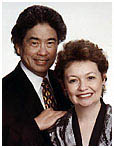 Effective
Teaching...
Effective
Teaching...
by Harry and Rosemary Wong
October
2004
The Saints of
Education
The demands on the teachers of special education students
are enormous. The work is emotionally and physically
draining. The stress is considerable. The magnitude
of the workload is colossal with all of the mandated reporting and
administrative tasks expected of them. The cumulative effect
of teaching the special education child causes many teachers to
leave the profession after just a few years.
But those teachers who stay—those teachers with the
patience to stay true to the task, those teachers with the skill
to bring order to the confusion, those teachers with a kind and
understanding heart to see all children as capable and worthy, those
teachers who teach special education children—these are truly
the “saints of education.”
Typical of these teachers is Robin Zarzour who
works with children with a variety of disabilities—Autism,
speech and language delays, ADHD, severe behavior, and with physical
and developmental handicaps. Robin teaches special education
at First Step Preschool in Ohio’s Parma City
Schools.
The First Step Preschool program is based on the following guidelines:
- Learning is developmental. Children are
provided the opportunity to learn at their own pace and with valuable
hands-on experiences.
- Children can learn through play. Ample
play experiences are provided to develop decision-making abilities
which integrate language, cognitive, social, adaptive, and motor
skills.
- Self-concept is critical. Parents and
staff work together to encourage children’s efforts and
accomplishments to motivate their love of learning.
Additional information on First Step Preschool can be found at
http://www.parmacityschools.org/first_step.
Robin’s students are three- to five-year olds. Each
of her classes can have up to eight special needs students and four
typically developing peer children who serve as
peer role models. A typically developing peer
is a youngster without identified disabilities who provides social
interaction and motivation for preschoolers with special needs.
Because all children learn from watching and interacting with other
children, typically developing peer models are an important part
of First Step Preschool.
Robin’s classes meet for 2.5 hours a day, four days a week,
with a morning and an afternoon session.
The Need for Structure
More than any other group of students, special education
students need structure. All effective classrooms have structure.
As we state in The First Days of School
- All effective classrooms have structure.
- Procedures + Routines = STRUCTURE
- Effective teachers manage with procedures and routines.
Structure does not mean a classroom that resembles a prison or
jail. In fact, classrooms that resemble a totalitarian prison
are those without any procedures or routines. So, an ineffective
teacher becomes a warden in that classroom just to survive the day.
Whereas, those classrooms that have a caring atmosphere, a safe
environment, and a learning climate where children can succeed,
are those where there is a CONSISTENCY the children
can depend upon.
A student in an at-risk situation said, “I like coming to
this school, because everyone knows what to DO. No one yells
at us and we can go on with learning.”
Special education students can be put in an at-risk situation if
there is not a consistent set of procedures. They
like a consistent set of routines every day as it makes life familiar
and friendly.
Preschool Procedures
After hearing me (Harry) at and in-service presentation and reading
The First Days of School, Robin says,
“I constantly think of procedures throughout the school day.”
To establish a consistent structure for her students, these are
the procedures that Robin teaches the first day of school:
1. The students come into the class and are assigned a locker.
They take off their coats and book bags and place them in their
lockers. The lockers have different colored nametags with
a different picture on each nametag so each child can discriminate
which one is theirs.
2. The children play and she gives them a "two-minute
warning" before clean up time. Autistic children need
time for transition, so a warning is given. Robin starts to
sing the "Clean Up" song:
Clean up clean up everybody clean up.
Clean up clean up everybody clean up.
The students, along with the adults, put the toys on the shelves.
This procedure helps the children to understand what "Cleaning
Up" means.
3. The children sit on the carpet for circle time.
Each child has his/her own assigned 'seat' depending on the needs
of the individual child. After a few days, they know where
their seats are and circle time is ready to begin. Robin sings
the same opening circle song daily. The children sing along
and they are ready to participate in circle.
Hello, so glad you’re here; hello, so glad you’re
here.
Hello, so glad you’re here; one two three, let’s give
a cheer. Hooray.
There is also a schedule within the circle time (calendar, weather,
story, song, game, then the gym). The circle time schedule
is consistent and the students like the consistency of the routine.
4. After circle time the children line up along the wall
and walk to the gym in a quiet fashion. This procedure is
taught from the first day. If a child forgets the procedure,
Robin simply says, "Remember the procedure." (See Chapter
20 in The First Days of School and https://teachers.net/wong/DEC00.)
5. In the gym, she alerts the children when there are two
minutes left to play and she shows them where to line up.
Feet are painted on the gym floor so the children have a specific
place to line up.
6. Then the children go back to the classroom for snack time
and hand washing. They form in a line and Robin puts soap
on each child's hands and helps rinse and dry them. The children
then go to their assigned seats (again depending on each child's
needs), and once all the children are seated, the class then sings
the snack song and the teachers disperse the food to each child.
It’s time for our snack; it’s time for our snack.
It’s time for us to eat and drink; it’s time for our
snack.
The children have to ask for more juice and/or snack using their
words or a picture communication board. The children discard
their cups and napkins and sit on the carpet to look at books.
7. The children are then ready for small group time.
Three children go to the computer with the classroom assistant.
Four children do a table or floor activity with the teacher and
four children do an activity by themselves (sand box, blocks, Play
Dough®, etc). After ten minutes, the children switch groups.
They know the routine and rotation of switching after a week.
This sets the stage for cooperative learning and working together.
8. To prepare for going home, the children get their coats
and book bags and place them on the carpet. The teacher, classroom
assistants, and older preschoolers (five-year-olds) help the younger
or more physically challenged preschoolers with fastening coats
and boots.
9. They sing the "Goodbye Song" and the children
line up to go home.
It’s time to say goodbye to our friends (clap, clap).
It’s time to say goodbye to our friends (clap, clap).
Oh, it’s time to say goodbye, so just smile and wink your
eye;
It’s time to say goodbye to our friends (clap, clap).
Throughout the class time, Robin uses many visuals, gestures, pictures,
and objects to transition the students from one place to another.
These procedures are taught and reinforced daily. No matter
the needs of the child, each one benefits from the procedures.
In many special education classrooms there are assistants and therapists
that come and go throughout the day and/or week. Having a
routine and procedures keeps the adults as well as the children
on the same page, reinforcing the same practices throughout the
day.
Robin says, “Teaching special education is very rewarding
since these children are special angels. Procedures
make learning enjoyable for teachers, classroom assistants, therapist,
students, and parents.”
They Are Valuable Human Beings
Special education is one of the fastest-growing areas in school
budgets nationally. The number of children in the United States
who qualify for special education is up nearly 40 percent in the
past decade. This trend is expected to continue because of
diagnosis of children at earlier ages and medical advances that
have resulted in more children surviving critical accidents and
illnesses. The need for teachers qualified to teach special
education will increase faster than the average for all occupations
for the next 10 years. School districts will continue to face
a critical shortage of special education teachers.
Some 6.5 million children between ages three and twenty-one have
been diagnosed with special needs and cost at least twice as much
as other children to educate. Young children with disabilities
are provided with a free and appropriate education through the Individuals
with Disabilities Act (IDEA), yet the federal government
only contributes about 18 percent of the some $50 billion (and rising)
spent on special education annually.
Regardless of their numbers and the cost, special education
students are valuable human beings and are guaranteed an education
in America. Teachers like Robin Zarzour and the many
other special education teachers are to be commended for choosing
this aspect of education as their profession.
Special education presents the biggest challenges to teachers and
offers the most rewarding outcome—preparing a less than able
child to function in a very demanding teen and adult world.
To accomplish this is no small task. It is a job befitting
a miracle worker, a guardian angel, a teacher who sees the potential
and value of every child.
Give each student you encounter this year your very best—your
patience, your skill, and your caring heart—and know that
you will leave an indelible mark in the life of that child.
For that’s the charge of all teachers, to realize the potential
of every child and make it happen for them.
 For a printable version of this article click
here.
For a printable version of this article click
here.
Harry & Rosemary Wong products: http://www.harrywong.com/product/
Email Harry Wong: harrywong@teachers.net
Gazette Articles by Harry & Rosemary Wong:
If you spot a link that appears to be out-of-date, please alert us at webmaster@teachers.net!
- A Grateful Goodbye After 15 Years (Jun 2015)
- Love, Marriage, and Babies, Oh My! (May 2015)
- Retention Rate Is 100 Percent (Apr 2015)
- Teacher Effectiveness and Human Capital (Mar 2015)
- Training Teachers to Be Effective (Feb 2015)
- Making Deals Is Ineffective (Dec 2014 / Jan 2015)
- Retrieving and Carrying Electronic Devices (Nov 2014)
- Sharing to Succeed (Oct 2014)
- How a University Prepares Its Students (Sep 2014)
- Effective Teaching (Aug 2014)
- Your Future Is in Your Hands (June/July 2014)
- The Classroom Management Book (May 2014)
- When Students Succeed; Teachers Succeed (April 2014)
- Teaching New Teachers How to Succeed (March 2014)
- Execute and Praise (February 2014)
- Shaping a Solid Foundation (Dec 2013 / Jan 2014)
- The Most Misunderstood Word (November 2013)
- How to Start Class Every Day (October 2013)
- Prevention: The Key to Solving Discipline Problems (September 2013)
- Planning, Planning, Planning (August 2013)
- Are You THE One? (June / July 2013)
- Practical Examples That Work (May 2013)
- A Disability Is Not a Handicap (Apr 2013)
- Totally Inexcusable (Mar 2013)
- Be Proud of Public Education (Feb 2013)
- Structure Will Motivate Students (Dec 2012 / Jan2013)
- Orchestrating the Classroom (Nov 2012)
- The Lasting Impact of Instructional Coaching (Oct 2012)
- Learning, Laughing, and Leaving a Legacy (Sep 2012)
- Twenty-two, First Year, and Legit (Aug 2012)
- A Master Teacher of Teachers (June/July 2012)
- Where Going to School Means Success (May 2012)
- A Nationally Celebrated High School (Apr 2012)
- The Highest Rated School in New York City, Part 2 (Mar 2012)
- The Highest Rated School in New York City, Part 1 (Feb 2012)
- The Importance of Culture (Dec 2011 / Jan 2012)
- You Can Teach Classroom Management (Nov 2011)
- Seamless, Transparent, and Consistent (Oct 2011)
- Coaching Teachers to Be Effective Instructors (Sep 2011)
- How a Principal Creates a Culture of Consistency (Aug 2011)
- Graduation Begins in Your Classroom (June/July 2011)
- The Inspiration of a Mother (May 2011)
- How to Be an Effective Leader (Apr 2011)
- Learning Objectives: The Heart of Every Lesson (Mar 2011)
- Even Shakespeare Had Structure (Feb 2011)
- Effectiveness Defined: It's Not a Mystery (Dec 2010 / Jan 2011)
- Surviving Without a Principal (Nov 2010)
- Achieving Greatness: Locke Elementary School, Part 2 (Oct 2010)
- Teaching Greatness: Locke Elementary School, Part 1 (Sep 2010)
- Effective from the Start (Aug 2010)
- Ten Year Summary of Articles, 2000 to 2010 (June/July 2010)
- The Success of a Culture of Consistency (May 2010)
- Training Teachers to Be Effective (Apr 2010)
- Learning to Teach, Teaching to Learn (Mar 2010)
- Turning Teaching Dreams into Reality (Feb 2010)
- Dreams and Wishes Can Come True (Dec 2009 / Jan 2010)
- Success in a State Controlled School (Nov 2009)
- Inner City Is Not An Excuse (Oct 2009)
- Exceeding All Expectations (Sep 2009)
- Teachers Are the Difference (Aug 2009)
- Nine Year Summary of Articles, 2000 to 2009 (Jun/Jul 2009)
- Teachers Are the Greatest Assets (May 2009)
- The Tools for Success (Apr 2009)
- Assessing for Student Learning (Mar 2009)
- To Be an Effective Teacher Simply Copy and Paste (Feb 2009)
- The Sounds of Students Learning and Performing (Dec 2008)
- A School That Achieves Greatness (Nov 2008)
- Boaz City Schools: Professional Learning Teams (Oct 2008)
- It Was Something Close to a Miracle (Sep 2008)
- A Computer Teacher Shows the Way (Aug 2008)
- Eight Year Summary of Articles, 2000 to 2008 (Jun/Jul 2008)
- An Amazing Kindergarten Teacher (May 2008)
- Schools That Beat the Academic Odds (Apr 2008)
- Academic Coaching Produces More Effective Teachers (Mar 2008)
- Coaches Are More Effective than Mentors (Feb 2008)
- Wrapping the Year with Rap! (Dec 2007/Jan 2008)
- The Floating Teacher (Nov 2007)
- Taking the Bite Out of Assessment—Using Scoring Guides (Oct 2007)
- Ten Timely Tools for Success on the First Days of School (Sep 2007)
- First Day of School Script - in Spanish, Too! (Aug 2007)
- Seven Year Summary of Articles, 2000 to 2007 (Jun 2007)
- Effective Teachers End the Year Successfully (May 2007)
- Training Gen Y Teachers for Maximum Effectiveness (Apr 2007)
- Classroom Management Applies to All Teachers (Mar 2007)
- Students Want a Sense of Direction (Feb 2007)
- Rubrics in Two College Classes (Dec 2006/Jan 2007)
- How to Write a Rubric (Nov 2006)
- Assessing Student Progress with a Rubric (Oct 2006)
- A 92 Percent Homework Turn-in Rate (Sep 2006)
- Effective Teachers Are Proactive (Aug 2006)
- Five Year Summary of Articles (Jun 2006)
- Hitting the Bulls Eye as a Beginning Teacher (May 2006)
- They're Eager to Do the Assignments (Apr 2006)
- The Success of Special Ed Teachers (Mar 2006)
- What Teachers Have Accomplished (Feb 2006)
- Fifty Years Ago, The Legacy (Dec 2005/Jan 2006)
- The Emergency Teacher (Nov 2005)
- Classroom Management Is Not Discipline (Oct 2005)
- A Successful First Day Is No Secret (Sep 2005)
- The Most Important Factor (Aug 2005)
- Four Year Summary of Articles (Jul 2005)
- Improving Student Achievement Is Very Simple (Part 2) (Jun 2005)
- Improving Student Achievement Is Very Simple (Part 1) (May 2005)
- Never Cease to Learn (Apr 2005)
- His Classroom Is a Real Life Office (Mar 2005)
- The Power of Procedures (Feb 2005)
- The First Ten Days of School (Jan 2005)
- PowerPoint Procedures (Nov/Dec 2004)
- The Saints of Education (Oct 2004)
- How Procedures Saved a Teacher's Life (Sep 2004)
- How to Help Students with Their Assignments (Aug 2004)
- Three Year Summary of Articles (Jun/Jul 2004)
- His Students are All Certified (May 2004)
- What to Do When They Complain (Apr 2004)
- A Well-Oiled Learning Machine (Mar 2004)
- The Effective Teacher Adapts (Feb 2004)
- How to Start a Lesson Plan (Aug 2003)
- Applying for a Teaching Job in a Tight Market - Part 2 (Jun/Jul 2003)
- Applying for a Teaching Job in a Tight Market (May 2003)
- The Effective Substitute Teacher (Apr 2003)
- A First Day of School Script (Mar 2003)
- How to Retain New Teachers (Feb 2003)
- No Problem With Hurricane Lili (Dec 2002)
- A Class Size of 500 (Nov 2002)
- Effective Practices Apply to All Teachers (Oct 2002)
- Dispensing Materials in Fifteen Seconds (Sept 2002)
- How To Start School Successfully (Aug 2002)
- Teaching Procedures Is Teaching Expectations (June - July 2002)
- $50,000 to Replace Each Teacher (May 2002)
- Even Superintendents Do It (Apr 2002)
- Impossible, No Job Openings? (Mar 2002)
- A Stress Free Teacher (Feb 2002)
- A Most Effective School (Jan 2002)
- Van Gogh in Nine Hours (Dec 2001)
- The Effective Teacher Thinks (Nov 2001)
- How a Good University Can Help You (Sep 2001)
- How to Motivate Your Students (May 2001)
- How to Recognize Where You Want to Be (Apr 2001)
- What Successful New Teachers Are Taught (Mar 2001)
- A Journey of the Heart (Feb 2001)
- The Miracle of Teachers (Jan 2001)
- It's Not the Students. It's the Teacher. (Dec 2000)
- The First Five Minutes Are Critical (Nov 2000)
- How to Start a Class Effectively (Oct 2000)
- The Problem Is Not Discipline (Sep 2000)
- There Is Only One First Day of School (Aug 2000)
- Applying for Your First Job (Jul 2000)
- Your First Day (Jun 2000)
Browse through the latest posts from the Classroom Management Chatboard...
|




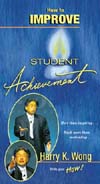
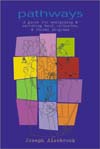


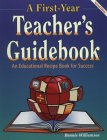
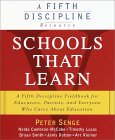

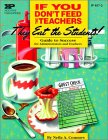
 Effective
Teaching...
Effective
Teaching...